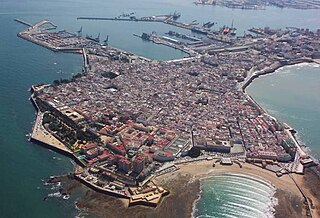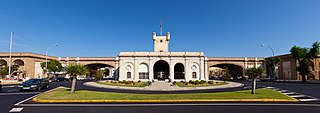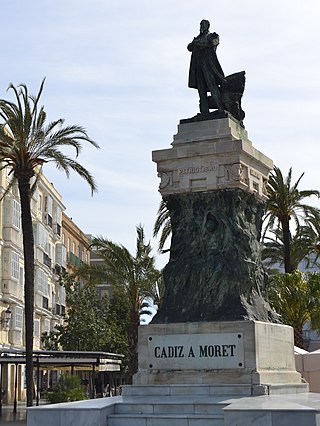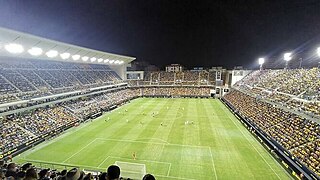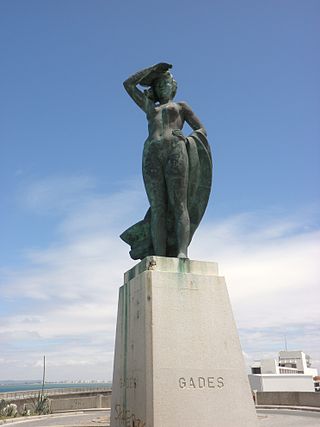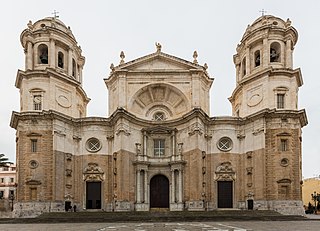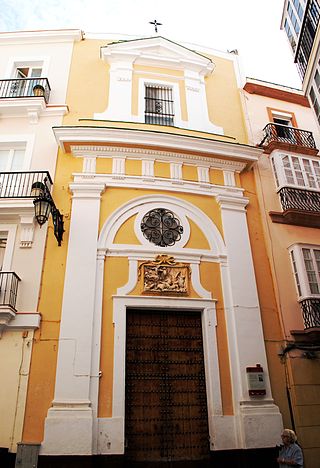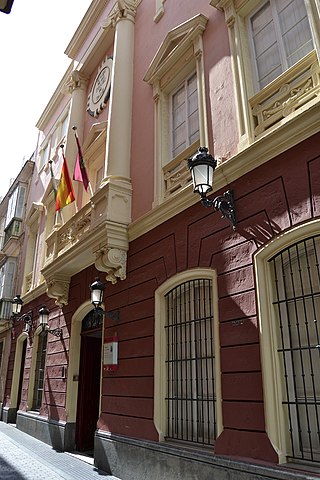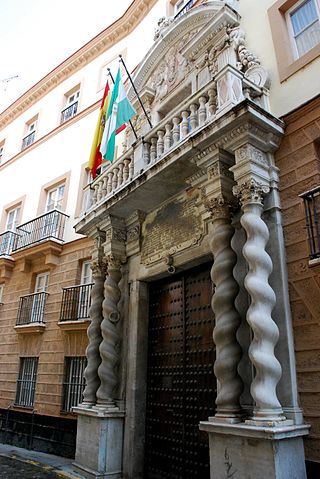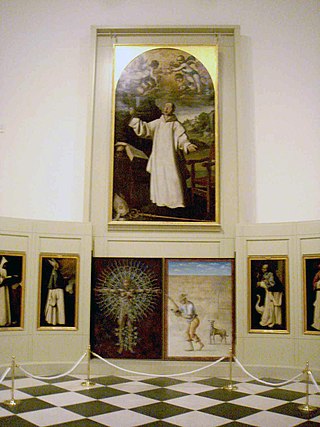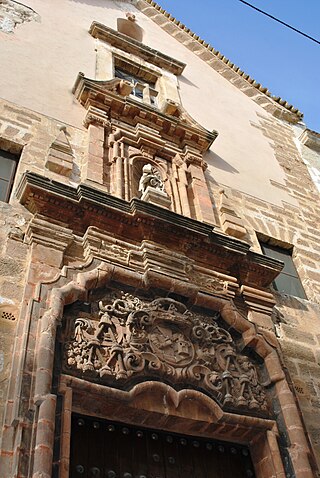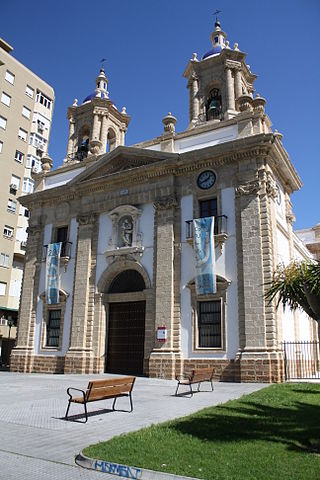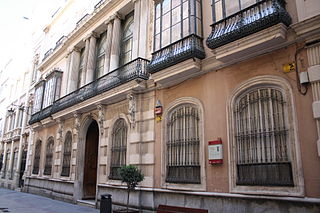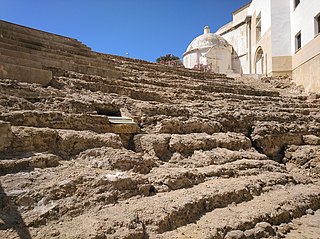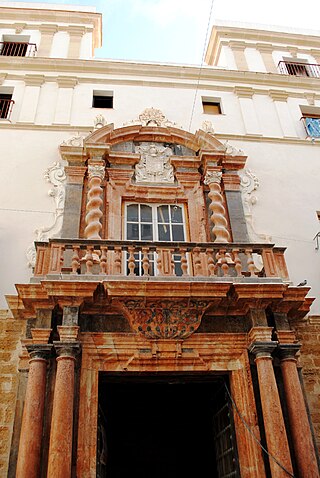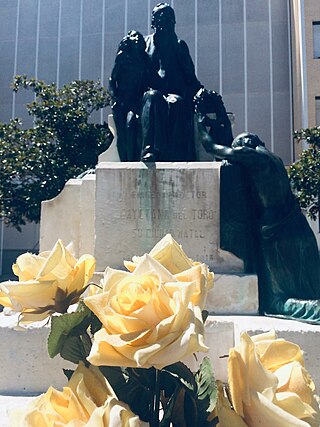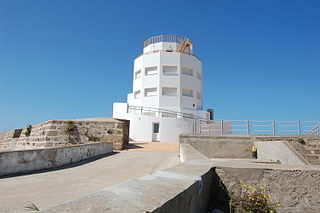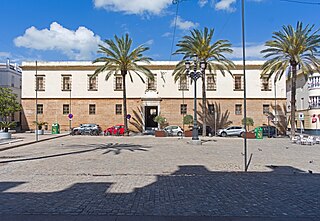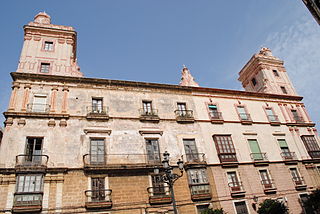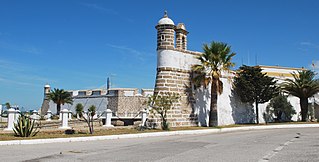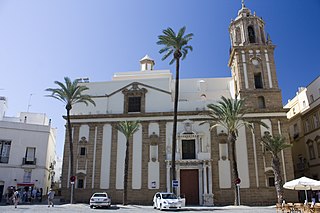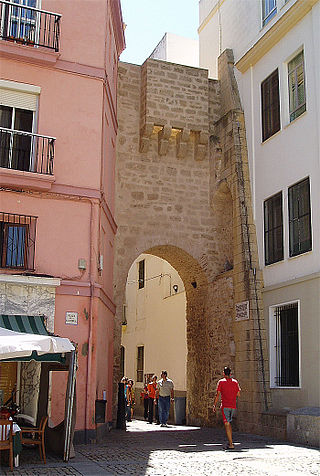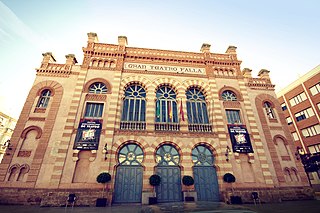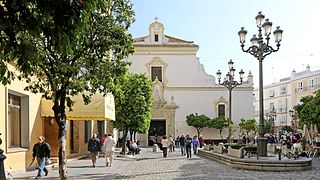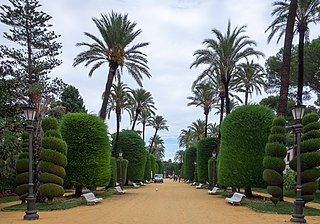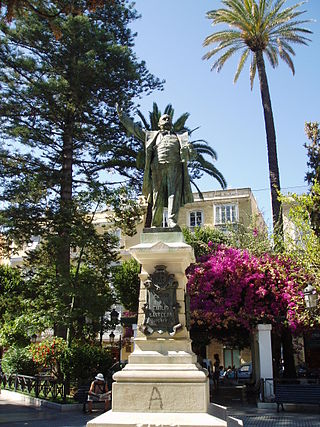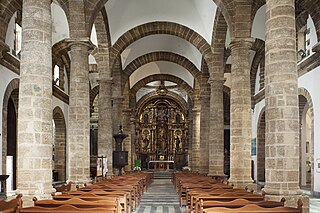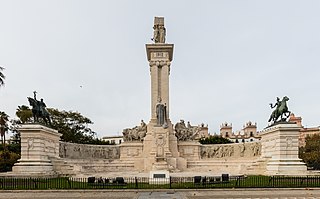31 Sights in Cádiz, Spain (with Map and Images)
Legend
Premium Sights
Book tickets, guided tours and activities in Cádiz.
Guided Free Walking Tours
Book free guided walking tours in Cádiz.
Welcome to your journey through the most beautiful sights in Cádiz, Spain! Whether you want to discover the city's historical treasures or experience its modern highlights, you'll find everything your heart desires here. Be inspired by our selection and plan your unforgettable adventure in Cádiz. Dive into the diversity of this fascinating city and discover everything it has to offer.
Sightseeing Tours in CádizActivities in CádizCádiz is a city in Spain and the capital of the Province of Cádiz, in the autonomous community of Andalusia. It is located in the southwest of the Iberian Peninsula off the Atlantic Ocean separated from neighbouring San Fernando by a narrow isthmus.
The Puerta de Tierra is a redoubt of what was the entrance wall to the city of Cádiz, Andalusia, Spain. Built in the eighteenth century by Torcuato Cayón, the façade is carved in marble and is conceived more as a religious altarpiece than as a military fortification. It is listed as an Asset of Cultural Interest.
The Monument to Moret is an instance of public art in Cádiz, Spain. Designed by Agustín Querol, it consists of a bronze statue of Liberal politician Segismundo Moret put on top of a pedestal displaying elaborated allegorical reliefs.
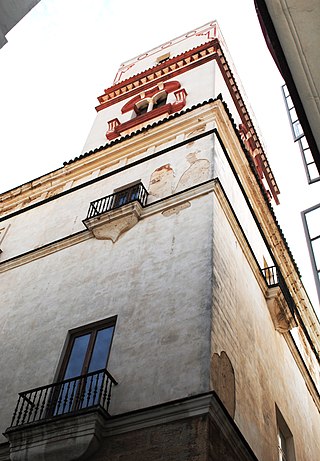
The Tavira Tower is the tallest watchtower in the old city of Cadiz, with approx. 33 meters above the ground and 45 meters above sea level, and the second highest point, only surpassed by the towers of La Catedral, at approx. 58 meters above sea level. It is located in the House-Palace of the Marqueses de Recaño, on the corner of Marqués del Real Tesoro and Sacramento streets, and was built in the eighteenth century in Baroque style. Designated the official watchtower of the port of Cadiz in 1778 because it was the highest, it was named after its first lookout, Lieutenant Antonio Tavira. It currently houses the Camera Obscura, one of the most symbolic tourist attractions in the city of Cadiz.
5. Estadio Nuevo Mirandilla
Nuevo Mirandilla is a football stadium in Cádiz, Spain. The stadium is the home ground of Cádiz CF. The stadium was originally inaugurated as Estadio Ramón de Carranza on 3 September 1955. It has since then been completely rebuilt twice. With a capacity of 25,033 seats, it is the 24th-largest stadium in Spain and the 5th-largest in Andalusia.
6. Gades
Gades is the Latin name of the current city of Cádiz. The Greeks called it Διδύμη (Didýme). Always considered an island, it was described by authors such as Pomponio Mela or Pliny the Elder. García y Bellido makes the following comment: "Gades was an island in ancient times, and still is, although the fact is not perceptible. For this reason, Pliny, Strabo and Mela all speak of it when describing the islands that surround the continents." The city had two urban centers, one on the islands and one on the mainland, hence the name Διδύμη.
7. Catedral de la Santa Cruz de Cádiz
The Cathedral of the Holy Cross over the Waters is a Catholic cathedral in Cádiz, southern Spain, and the seat of the Diocese of Cadiz y Ceuta. It was built between 1722 and 1838. The cathedral was declared Bien de Interés Cultural in 1931.
8. Iglesia de la Conversión de San Pablo
The Church of the Conversion of San Pablo, known as the Church of San Pablo, in the city of Cádiz is a Catholic temple of the seventeenth century that was rebuilt in neoclassical style at the end of the eighteenth century.
Wikipedia: Iglesia de la Conversión de San Pablo (Cádiz) (ES)
9. Museo de las Cortes de Cádiz
Iconographic and Historical Museum of the Cortes and Site of Cadiz. Today called the Museum of the Cortes. It is a historic art gallery located on Santa Inés Street in Cádiz. It was born as a reference within the events carried out in the city to commemorate the Centenary of the Constitution of 1812, the first in the History of Spain.
10. Casa de las Cadenas
The Casa de las Cadenas de Cádiz is a seventeenth-century palace house, located in the historic center of the city, which is currently the headquarters of the Provincial Historical Archive of Cádiz. It was completely refurbished in 1987 by the architects Cruz y Ortiz, to house the headquarters of the Provincial Historical Archive of Cádiz. It is listed as an Asset of Cultural Interest.
11. Museo de Cádiz
The Museum of Cadiz is a museum located in Cádiz, Spain. It was founded in 1970 after the merger of the Provincial Museum of Fine Arts with the Provincial Museum of Archaeology. It is on three floors, archaeology on the ground floor, art on the first, and puppets on the second floor. Entry is free for citizens of the European Union.
12. Iglesia de San Lorenzo
The church of San Lorenzo Mártir located at the confluence of Calle Sagasta nº 55 and Calle Armengual nº 3 in Cádiz (Spain) is due to the patronage of Bishop Lorenzo Armengual de la Mota, with the intention of providing the neighborhood of La Viña with a parish aid.
13. Iglesia de San José
The church of San José is a neoclassical temple of the late eighteenth century located in Cádiz, Spain, completed in 1787. It was declared an Asset of Cultural Interest in 1979.Su construction was in charge of the architects Torcuato Cayón and Torcuato Benjumeda.
14. Casa Palacio de los Mora
Mora's house-palace is located on Calle Ancha, within the historic center of the city of Cádiz (Spain). The property, listed as an Asset of Cultural Interest since 1981, dates from the mid-nineteenth century and is the work of the architect Juan de la Vega y Correa.
15. Teatro Romano de Cádiz
The Roman Theatre of Cádiz is an ancient structure in Cádiz, Andalusia, in southern Spain. The remains were discovered in 1980. The theatre, which was likely built during the 1st century BC and was one of the largest ever built in the Roman Empire, was abandoned in the 4th century and, in the 13th century, a fortress was built on its ruins by order of King Alfonso X of Castile.
16. Casa del Almirante
The Admiral's House is a house-palace in Cadiz, Spain, product of the city's Indian trade, located in the San Martín square, it was ordered to be built at the end of the seventeenth century by the family of the Admiral of the Fleet of the Indies, Diego de Barrios. From the outside, the magnificent façade of Genoa marble, from the Andreoli workshop and assembled by the master García Narváez, stands out. The colonnaded courtyard, the staircase under an elliptical dome and the living room on the main floor still show signs of its nobility.
17. Monumento a Cayetano del Toro
The Cadiz people, in recognition of gratitude, tried to put a monument to Don Cayetano del Toro and Quartiellers in the Plaza de Mina, indicating the Hon. Mrs. Ms. Sponsorship of Biedma, wishing that Mariano Benlliure is sculpted. This project did not crystallize. When he already died, the Hispano -American Academy of Cádiz did not want to retard this tribute more and encouraged the collection to erect him in the then called Plaza de Méndez Núñez. Sponsorship of Biedma died on September 14, 1927, in Cádiz, without seeing his purpose of carrying out the monument to his friend Cayetano del Toro.
18. Casa de las Cinco Torres
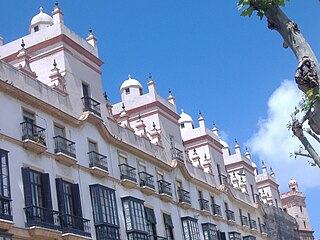
The house of the Five Towers is a homogeneous group of buildings located in the Plaza de España, in the city of Cádiz (Spain). These are five different houses built on a block of large proportions, which were built around 1771 and are in the Baroque style, from the transition to neoclassical. It is listed as an Asset of Cultural Interest.
19. Torregorda
Torregorda is a military tower of the province of Cádiz, located between Cádiz and San Fernando. The tower was originally built at the beginning of the 17th century, perhaps on remains of the primitive Torres and Almadraba de Hercules that rose in this same place. It was part of the Torres system that monitored the coast and through which the alerts could be transmitted by smoked or bonfires. Torregorda maintained visual contact at least with those of Sancti Petri, Torre Alta and San Sebastián. Around the tower the battery would be built in the first half of the 18th century. His semicircular front directed the artillery towards the open sea and at the same time protected the way between Cádiz and San Fernando that ran alongside it. Subsequently, it must have been renovated in the actions related to the arrival of the Napoleonic troops, incorporating the perimeter pit and modifying the earth front. To prevent it from serving as a reference to the enemy during the war with the US, the tower was demolished to the solid basement in 1898, and on this the current one would be built in 1932. The battery, in good condition although with the partially occupied pitty , has lost the parapet and the wall of the pit from the north flank.
20. Casa Fragela
The Casa Fragela, or as it is traditionally known, the Casa de las Viudas, is a building in Cádiz located in Plaza Fragela, in front of the Teatro Falla. The house was paid for and built at the initiative of Juan Clat Fragela, a wealthy merchant of Armenian origin, who gave it to accommodate widows and women without economic resources.
21. Casa de las Cuatro Torres
The house of the Four Towers is located in the heart of the San Carlos neighborhood of the city of Cadiz (Spain). It is, in fact, a harmonious ensemble made up of four houses. Juan Clat Fragela, a Syrian merchant established in the city, was the promoter of this building, erected between 1736 and 1745. Aware of the uniqueness of his project, Fragela gave up part of the plot he owned to leave a free space in front of the construction and thus achieve a better view of the whole. It is listed as an Asset of Cultural Interest.
22. Castillo de San Lorenzo del Puntal
The castle of San Lorenzo del Puntal, also known as the Castle of Puntales, was together with the castle of San Luis and Matagorda, part of the complex defensive system installed in the city of Cadiz, in Spain, during the War of Independence, to control the entrance to the Bay. It is located in the Plaza de San Lorenzo del Puntal in the neighborhood of the same name, the Barrio de Puntales.
23. Iglesia de Santiago
The church of Santiago de Cádiz is a Catholic temple from 1635 in the Mannerist style. It is located in the Plaza de la Catedral and was the headquarters of a school of the Society of Jesus in this city, of which today only the temple remains.
24. Arco de la Rosa
The Arco de la Rosa is the old western gate nestled in the walls of medieval Cádiz. It is currently located next to the cathedral of Cádiz, connecting the Plaza de la Catedral with the Barrio del Pópulo through the Pasaje del Arco de la Rosa. It is listed as an Asset of Cultural Interest.
25. Gran Teatro Falla
The Gran Teatro Falla is a theater in the city of Cádiz, Andalusia, Spain. It is located in the Plaza Fragela, facing the Casa de las Viudas and adjacent to the Faculty of Medicine of the University of Cádiz.
26. Palacio de los Marqueses de Recaño

The Palace of Recaño or Palace of the Marquises of Casa Recaño is a palace in the city of Cádiz built in the eighteenth century for the Genoese patrician Bernardo Recaño, 1st Marquis of Casa Recaño. Its lookout tower, called Torre de Tavira, is the tallest in the city. It housed the first seat of the Supreme Court of Spain (1812) as well as the School of Noble Arts of Cádiz (1838). It is currently home to the Carnival Museum.
27. Iglesia y Convento de San Francisco
The Convent of San Francisco de Cádiz is a former Franciscan convent located inside the old town of the city, in the central square of the same name. Of the original complex, only the cloister and the church remain.
28. Parque Genovés
Parque Genovés is a historical garden located in the seaside of Cádiz city in Andalusia, Spain. Its origin can be traced back to the middle of the 19th century, having been widened and remodeled a few times since then.
29. Emilio Castelar
The Monument to Emilio Castelar in Cádiz (Spain), the work of the sculptor Eduardo Barrón, is located in the centre of what was once Plaza de Castelar, now Plaza de la Candelaria. It pays tribute to Emilio Castelar, from Cadiz, who was born at number 1 of the same square, on September 7, 1832. In its place there was previously a small fountain. The initiative was due to Mayor Luis José Gómez Aramburu. The foundry was made in 1905 by Ignacio Arias, in Madrid.
30. Iglesia de Santa Cruz
The Church of the Holy Cross is a Roman Catholic church in the Spanish city of Cádiz. It was the cathedral of the Diocese of Cádiz y Ceuta between 1602 and 1838, when the new Cádiz Cathedral was completed.
31. Monumento a la Constitución de 1812
The Monument to the Constitution of 1812 is a monument in Cádiz, Spain that commemorates the centennial of the signing of the Constitution of 1812. The monument, commissioned in 1912 and completed in 1929, is located in the centre of the Plaza de España in Cádiz.
Share
How likely are you to recommend us?
Disclaimer Please be aware of your surroundings and do not enter private property. We are not liable for any damages that occur during the tours.
